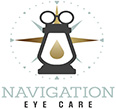By: Dr. Amber Teten, Optometrist Chesapeake VA
As an Optometrist Chesapeake VA, Dr. Teten often sees children struggling with vision problems requiring them to wear glasses. For many kids, the idea of wearing glasses can be daunting. Still, with the proper support and guidance, they can adjust to this new experience and enjoy all the benefits of a clear vision. Dr. Teten will share some tips and advice on how to help your child adjust to wearing glasses.
Signs that Your Child May Need Glasses
The first step in helping your child adjust to wearing glasses is recognizing the signs that they may need in the first place. Children may not always realize that they have a vision problem, so it’s up to parents to be aware of the common symptoms of vision problems in children. Some signs to look out for include the following:
- Squinting or closing one eye
- Sitting too close to the TV or holding books very close to their face
- Rubbing their eyes frequently
- Complaining of headaches or eye pain
- Struggling to read or write
- Difficulty with coordination or sports
If you notice any of these signs, it’s important to schedule an eye exam with Dr. Teten, an Optometrist Chesapeake VA, at Navigation Eye Care. Early detection and treatment of vision problems can prevent further complications and ensure your child has the best chance of success in school and life.
Choosing the Right Glasses for Your Child
Once your child has been diagnosed with a vision problem that requires glasses, the next step is to choose the right pair of glasses. There are several factors to consider when selecting glasses for children, including:
- Frame materials: Glasses can be made from various materials, including plastic, metal, and titanium. It’s important to choose a durable and comfortable material for your child.
- Size: Glasses frames come in various sizes to fit different face shapes and sizes. Choosing a frame that fits your child’s face properly is important, as ill-fitting glasses can cause discomfort and headaches.
- Style: Many different glasses are available for children, from traditional wireframes to colorful plastic frames. Let your child choose a manner they feel comfortable wearing that reflects their personality.
Preparing Your Child for Wearing Glasses
Once you have chosen the right pair of glasses for your child, it’s important to prepare them for wearing glasses. Some children may be hesitant or resistant to wearing glasses. Still, they can learn to embrace this new experience with the proper support and encouragement. Here are some tips for preparing your child to wear glasses:
- Talk to your child about why they need glasses and how they will help them see better.
- Show your child pictures of other children wearing glasses to help normalize the experience.
- Encourage your child to wear their glasses for short periods of time at first, gradually increasing the amount of time they wear them each day.
- Reward your child for wearing their glasses, such as with stickers or small prizes.
It’s also important to address any concerns your child may have about wearing glasses, such as concerns about teasing or bullying. Talk to your child about how to respond to negative comments and encourage them to be proud of their glasses. You can also work with your child’s school to ensure that they support children wearing glasses and have policies to prevent bullying.
Caring for Your Child’s Glasses
Proper care and maintenance of your child’s glasses are essential to ensure that they last as long as possible and continue to provide clear vision. Here are some tips for caring for your child’s glasses:
- Clean the lenses with a microfiber cloth or lens cleaning solution to prevent scratches and smudges.
- Store glasses in a protective case when not in use to prevent damage.
- Avoid leaving glasses in hot cars or other areas where they may be exposed to extreme temperatures.
- Teach your child to carefully handle their glasses and avoid twisting or bending the frames.
If your child plays sports or is active, consider investing in sports goggles or glasses with impact-resistant lenses.
When to Seek Additional Help
Sometimes, glasses may not be enough to correct your child’s vision problems. If you notice any of the following signs, it’s important to seek additional help from an Optometrist Chesapeake VA like Dr. Teten:
- Your child’s vision does not improve with glasses, or their vision worsens.
- Your child experiences persistent eye pain or discomfort while wearing glasses.
- Your child’s eyes do not move together, or there is an abnormality in their eyes’ alignment.
- Your child has a family history of eye problems or conditions such as lazy eye or amblyopia.
Dr. Teten, an Optometrist Chesapeake, at Navigation Eye Care, can perform additional testing and recommend further treatment options, such as vision therapy or contact lenses.
Helping your child adjust to wearing glasses may require patience, persistence, and support. Still, the benefits of clear vision are well worth the effort. By recognizing the signs that your child may need glasses, choosing the right pair of glasses, preparing your child for wearing glasses, and caring for their glasses properly, you can help your child thrive and succeed in school and in life. Remember, if you have concerns about your child’s vision or ability to adjust to wearing glasses, don’t hesitate to seek help from an Optometrist Chesapeake VA like Dr. Teten at Navigation Eye Care. Together, we can ensure that your child has the best possible vision and eye health for years.
